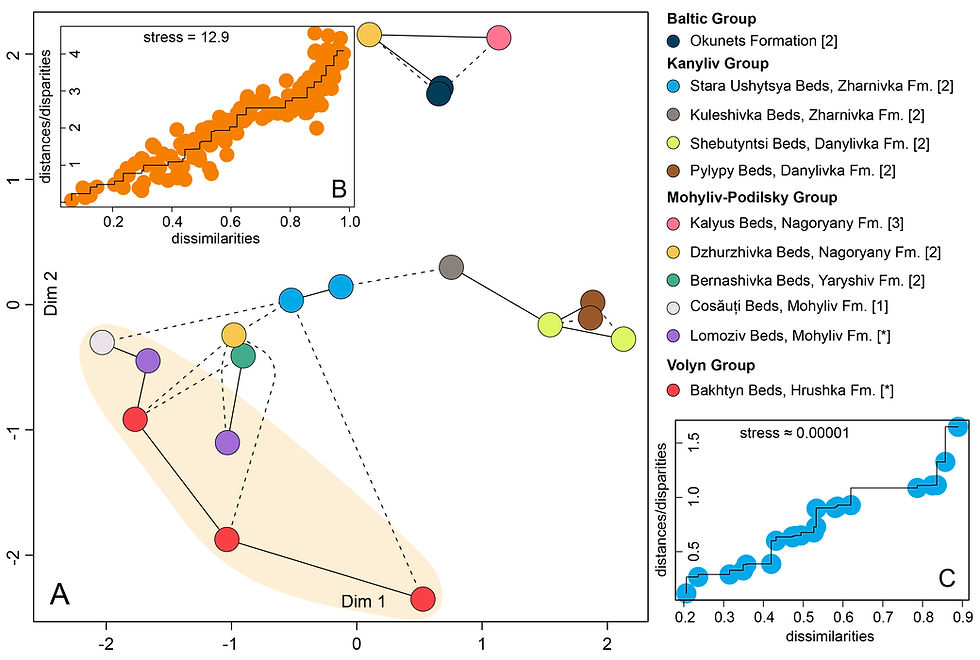Detrital zircon geochronology of the Volyn-Orsha sedimentary basin in western Ukraine
- frankovski
- Nov 11, 2023
- 1 min read

https://doi.org/10.3390/geosciences13050152
Abstract:
We used LA-ICP-MS U-Pb data for detrital zircon to constrain the Maximum Depositional Age (MDA) and provenance of clastic sedimentary rocks of the Volyn-Orsha sedimentary basin, which filled an elongated (~625 × 250 km) depression in SW Baltica and attained ~900 m in thickness. Eighty-six zircons out of one hundred and three yielded concordant dates, with most of them (86%) falling in the time interval between 1655 ± 3 and 1044 ± 16 Ma and clustering in two peaks at ca. 1630 and 1230 Ma. The remaining zircons yielded dates older than 1800 Ma. The MDA is defined by a tight group of three zircons with a weighted mean age of 1079 ± 8 Ma. This age corresponds to the time of a ~90° clockwise rotation of Baltica and the formation of the Grenvillian—Sveconorwegian—Sunsas orogenic belts. Subsidence was facilitated by the presence of eclogites derived from subducted oceanic crust. The sediments of the Orsha sub-basin in the northeastern part of the basin were derived from the local crystalline basement, whereas the sediments in the Volyn sub-basin, extending to the margin of Baltica, were transported from the orogen between Laurentia, Baltica and Amazonia.
Keywords: Mesoproterozoic; Neoproterozoic; Baltica; Amazonia; detrital zircon; Volyn-Orsha basin




Comments